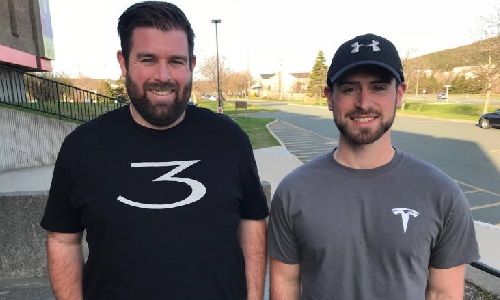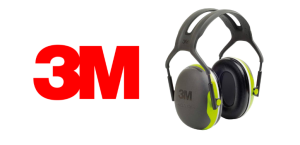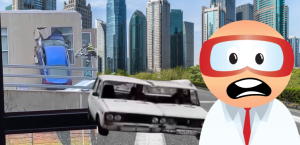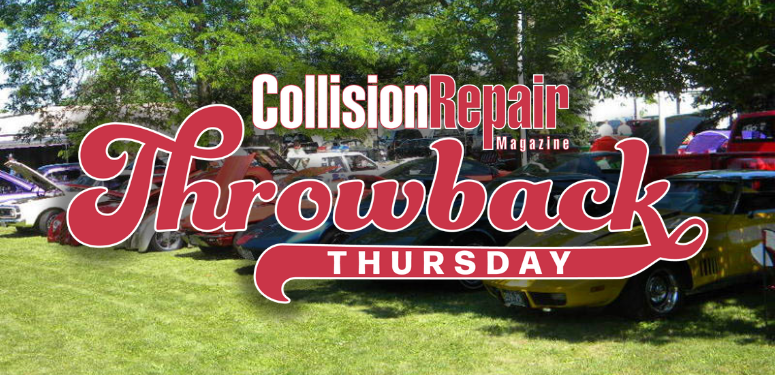By Jeff Sanford
Toronto, Ontario — May 25, 2018 — In today’s Friday Fun: Searching for the oldest collision repair shops in America, a car owner becomes super angry after insurance costs rise and two interns from Newfoundland impress Tesla’s Elon Musk.
The CBC reported that a Toronto resident, Steven Baker, was annoyed when his car insurance shot up by about $600 after moving less than four kilometres. An insurance expert quoted in the story said the reasons behind premiums “aren’t always easily visible.” According to the media report, when Baker asked TD Insurance for an explanation, “the person on the phone told him his new location had more intersections.” The difference in price was also said to be related to the change in postal codes. According to the story, “The practice of determining premiums based on postal codes has been under scrutiny for a while. Both the NDP and the Liberals are promising to halt it if they’re elected next month.”
The U.K. insurance market is facing a rising number of so-called “ghost-brokered” auto insurance policies. According to a report, “Ghost brokers are fraudsters who set themselves up to look like legitimate insurance brokers and offer low cost insurance. These criminals then buy a policy using a stolen identity and often using a stolen credit card which the motorist is noted on the policy as a named driver.” The car insurance policies are completely worthless, despite the victim believing they are legit. According to a U.K. insurance company there has been a 14 percent increase in the number of motorists falling for the scam.
A bill in the Michigan state legislature would block insurance companies from increasing car insurance premiums on drivers who have made claims for damage caused by Michigan’s failing road. According to a state news report, “Lawmakers behind the bill say the state’s roads have been underfunded and poorly maintained and residents shouldn’t be punished for driving on them.” A state representative is quoted as saying his constituents have had to get hundreds of dollars in car repairs because of potholes. “The constituents of Michigan are getting tired of that because when they put one or two claims in the insurance companies want to raise their rates right away,” he is quoted as saying.
The owner of a Hyundai Sonata says he was “almost killed” after his vehicle stalled on a busy Toronto highway and caught on fire. He escaped the vehicle in heavy traffic. The flames spread from the engine compartment. Soon the entire vehicle was a raging inferno. According to a news report, the driver had brought the car into a mechanical repair shop after the car had lost power once before in a similar manner. Apparently the problem wasn’t fixed. In April 2017 Hyundai recalled 1.4 million cars and SUVs in Canada, the U.S. and South Korea because engines could stall and fail. The 2011 Hyundai Sonata was among the vehicles on the list. The driver has since replaced the Sonata with a Subaru.
An interesting column from the website Autobody News traces the origins of the collision repair industry to the 1940s. According to the piece, “in December 1941, just before America’s entry into the war, new car production hit a peak in the U.S. A financial analyst employed by State Farm insurance estimated there were 30,000,000 cars on America’s roads, and less than half carried adequate insurance. Subsequently, State Farm agents were selling record numbers of new auto insurance policies. Every week, records were broken. It seemed like there would be no end to the ravenous selling of auto insurance policies.” And then all hell broke loose on a Sunday morning in Hawaii. A U.S. Navy base that few Americans were aware of was attacked. America entered the Second World War. Only when the GIs returned home after the war did the auto boom take off again. According to the column, it “is safe to say that the modern collision repair industry was born in the summer of 1945. On October 3, 1945, civilian car production resumed with new designs and new technology. Car makers worked frantically to keep pace with new demand. Multi-car families soon became commonplace, adding to the aggregate miles traveled and commensurate accidents. Body shops and auto repair businesses were sprouting up on every corner. Hundreds of thousands of GIs were returning from the war. Some returned to their prior jobs, but many, having joined the service right out of high school, were looking for work. With the influx of new cars and increased availability of gasoline and tires, and given the rather crude state of automotive technology and ease of repair, many ex-GIs went into the mechanical or body repair business.” The U.S. government even helped by providing ‘How-To’ books on starting a car repair business.” Through the rest of the decade automotive refinish technology improved. Paint booth fires in the 1930s led to improved spray rooms. Specialty autobody repair tools, metallic paints, paint mixing and production at the shop and jobber level and early estimating guides also came to be in the ‘40s.
Autobody News also ran an ad between November 2017 and February 2018 looking for the oldest continuously operated bodyshops in America. One name that came up was George V. Arth and Son in Oakland, California. Founded in 1877 the company is “still going strong.” The founder arrived with his family from the region of Alsace-Lorraine, France. “A blacksmith by trade, George set up shop in the East Bay when he purchased a small local business named the Oakland Carriage Manufactory, which he later renamed to George V. Arth & Son. The business made a good living by repairing and painting horse-drawn buggies, but as Mr. Henry Ford’s ‘horseless carriages’ began appearing on the local Oakland streets, George V. Arth & Son adapted to the new technology and began repairing and painting the new motorized vehicles.” Now, after 140 years and six generations George V. Arth & Son is “still providing quality automotive collision repair in Oakland, California.”
Another name that came up, Sirl’s Automotive, began August 14, 1914. Michael Sirl started out as a blacksmith, shoeing horses and mending farm equipment. Before long, “horseless carriages started appearing on Ohio’s muddy roads. Michael became curious and bought one. Like other blacksmiths of his time, he could see that change was coming. He knew automobiles would be the next wave of personal transportation, and he could see that the blacksmith trade was disappearing. He knew he had to turn to repairing automobiles.” Michael’s son, Ralph, joined him in the auto repair business. “Eventually, Ralph’s son, Dale, also joined in the family business and has been the owner since the mid-1960s. Dale’s sons, Dale Jr. and Gary, are currently working at the business, looking at taking over as the fourth-generation to own Sirl’s,” according to the story. The business is also documented as being the third-oldest towing company in the United States.
Speaking of towing, JP Towing Service and Storage in Toronto enjoyed some free publicity this past week. A post from a local community organizer in Toronto made rounds on social media thanking the company for helping to pull the “garden car” out of winter storage and set it up in Kensington Market. The car body features a growing garden and is part of the various sites to be found in the market through the summer.
Two young students from Newfoundland have ended up working in a Tesla factory after making a good impression on the company’s CEO, Elon Musk. Mark Comeau and Matthew Lane studied engineering at the College of the North Atlantic and Memorial University of Newfoundland in St. John’s respectively. They landed work placements at Tesla. According to a media report, “During the internship, Lane and Comeau saw a problem with the gating system on one of the production ramps at Gigafactory 1 and thought they might be able to do something about it. Six weeks later, the two Newfoundland students’ solution was brought online, and it must have impressed Musk and others at Tesla because both were asked to come back and start work on something else. After they successfully solved their new problem, Musk personally approached the two students and offered them a job as professional problem solvers, helping to overcome issues at the factory.”





































